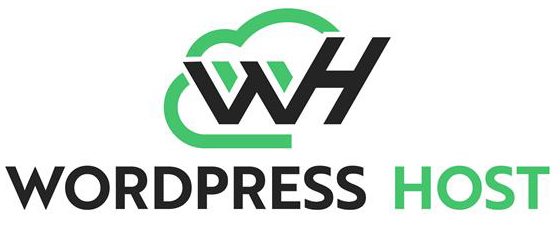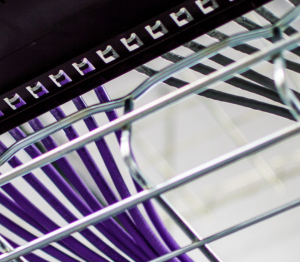In the ever-evolving realm of website management, mastering the intricacies of a WordPress server is akin to wielding a powerful tool that can propel your online presence to new heights. Imagine having the ability to enhance both speed and security on your website with expert finesse, gaining an upper hand in the digital landscape. With the digital world constantly buzzing with activity and competition, understanding how to optimize your WordPress server becomes not just an advantage but a necessity for staying ahead in the game.
Embark on a journey through the virtual realms as we delve into the art of mastering the WordPress Server, unraveling the secrets that hold the key to unlocking unparalleled performance and fortification. From enhancing loading speeds to fortifying your defenses against cyber threats, this blog post is your compass in navigating the intricate pathways of WordPress server management. Step into a realm where expertise meets innovation, and where the pursuit of speed and security converges seamlessly in the realm of WordPress Server optimization.
Choosing the Right Web Hosting Plan for Optimal Performance
When it comes to optimizing your WordPress server, one of the first steps you need to take is choosing the right web hosting plan. The performance of your website heavily relies on the quality and capabilities of your hosting provider. A reliable and efficient web host can significantly enhance the speed and overall performance of your WordPress server.
When selecting a web hosting plan, there are a few key factors to consider. Firstly, you need to assess the server resources provided by the hosting provider. Look for plans that offer ample storage space, sufficient bandwidth, and robust processing power. These resources are crucial for ensuring smooth website operations and fast loading speeds.
In addition to server resources, it’s important to consider the type of hosting environment that best suits your needs. Shared hosting may be suitable for small websites with low traffic volumes, but if you anticipate high traffic or require more control over your server settings, a virtual private server (VPS) or dedicated hosting plan might be more appropriate.
Furthermore, pay attention to the location of the data centers offered by the web host. Choosing a data center in close proximity to your target audience can significantly reduce latency and improve website loading times.
Implementing Content Delivery Networks (CDNs) for Speed Enhancement
A Content Delivery Network (CDN) is an excellent tool for boosting speed and performance on your WordPress server. CDNs work by distributing copies of your website’s static content across multiple servers located in different geographic regions.
When a user accesses your website, they are automatically directed to the nearest CDN server location. This reduces latency and minimizes the time it takes for content to reach their device. As a result, page load times are significantly improved.
To implement a CDN on your WordPress server, you can choose from a variety of CDN providers such as Cloudflare, MaxCDN, or Amazon CloudFront. These providers offer easy integration with WordPress and provide detailed analytics to help you monitor the performance of your website.
Utilizing Caching Plugins to Boost Loading Speeds
Caching plugins are another powerful tool in your arsenal for optimizing the speed of your WordPress server. These plugins generate static HTML versions of your dynamic web pages and store them on the server’s cache. When a user requests a page, the cached version is served instead of dynamically generating the content each time.
Popular caching plugins for WordPress include W3 Total Cache, WP Super Cache, and WP Rocket. These plugins offer various features such as browser caching, minification of CSS and JavaScript files, and content delivery network integration.
By utilizing caching plugins effectively, you can dramatically reduce page load times and improve overall website performance.
Securing Your WordPress Server: Best Practices and Tools
Ensuring the security of your WordPress server is paramount in today’s digital landscape. Cyber threats are constantly evolving, making it essential to implement robust security measures to protect your website from potential attacks.
One of the first steps in securing your WordPress server is keeping all software up to date. This includes not only the WordPress core but also themes and plugins. Outdated software can contain vulnerabilities that hackers can exploit.
In addition to regular updates, it’s crucial to use strong passwords for all user accounts on your WordPress server. Avoid using common passwords or easily guessable combinations. Consider implementing two-factor authentication for an added layer of security.
Furthermore, installing a reputable security plugin such as Wordfence or Sucuri can help fortify your WordPress server against malicious attacks. These plugins offer features like malware scanning, firewall protection, and brute force attack prevention.
Regular Updates and Maintenance: Key to a Secure Server
Maintaining a secure WordPress server requires regular updates and maintenance. As mentioned earlier, keeping your WordPress core, themes, and plugins up to date is crucial for security. Developers often release updates that address security vulnerabilities or introduce new features.
In addition to updates, it’s important to regularly backup your website’s data. This ensures that you have a recent copy of your website in case of any unforeseen events such as server crashes or hacking attempts.
Moreover, monitoring your server logs can provide valuable insights into potential security breaches or performance issues. By reviewing these logs regularly, you can identify and address any anomalies promptly.
Optimizing Image Sizes for Improved Performance
Images are an integral part of any website but can significantly impact loading speeds if not optimized properly. Large image files can slow down page load times and negatively affect user experience.
To optimize image sizes on your WordPress server, consider using compression techniques or plugins. These tools reduce the file size of images without compromising their quality. Popular image optimization plugins include Smush and EWWW Image Optimizer.
In addition to compression, it’s important to specify image dimensions in HTML attributes. This allows browsers to allocate space for the images before they finish loading, preventing layout shifts and improving overall performance.
Minimizing and Optimizing CSS and JavaScript Files
CSS and JavaScript files play a crucial role in the visual appearance and functionality of your WordPress website. However, poorly optimized or excessive code can slow down page load times.
To optimize CSS files, consider minifying them by removing unnecessary white spaces, comments, and line breaks. Minification reduces file size without affecting the functionality of the code. Popular plugins like Autoptimize and WP Rocket offer minification features.
Similarly, optimizing JavaScript files involves reducing their size and improving their execution efficiency. This can be achieved through techniques such as minification, concatenation, and asynchronous loading. Plugins like WP Rocket and Fast Velocity Minify can assist in optimizing JavaScript files on your WordPress server.
By minimizing and optimizing CSS and JavaScript files, you can improve website performance and provide a smoother user experience.


